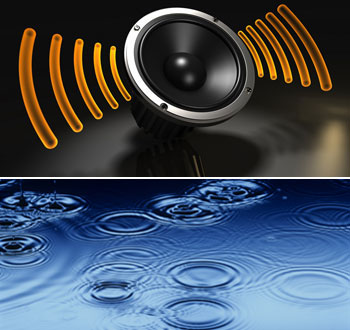 Sound waves and water waves
All waves can be thought of as a disturbance that transfers energy. Water waves and sound waves are formed through the vibration of particles. Water waves form because water molecules are disturbed, and sound waves are formed by the disturbance of air particles.
Sound waves and water waves
All waves can be thought of as a disturbance that transfers energy. Water waves and sound waves are formed through the vibration of particles. Water waves form because water molecules are disturbed, and sound waves are formed by the disturbance of air particles.
The very basis of communication is sound. The chirping of birds, music, car horn etc are few examples of sound.
Have you ever touched a speaker when a song or movie is played? You feel certain vibrations. These vibrations are responsible for the sounds we hear. You can feel vibrations in your throat when you hum a music. So sounds are produced when an object vibrates.
Sound is the propagation of vibrations through a material medium - a solid, liquid or gas. If there is no medium to vibrate, then no sound is possible. Sound waves travel through air in much the same way as water waves travel through water. In fact, since water waves are easy to see and understand, they are often used as an analogy to illustrate how sound waves behave.
When a stone is dropped on the surface of water (say a lake or pond), ripples are created which travel like waves. The wave is not a bulk movement of water as such, but rather, it is a disturbance travelling on the surface of the lake. Likewise, sound is a form of energy that travels in the form of vibrations(disturbance) through air or any other medium.